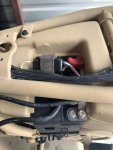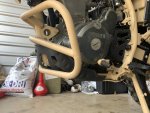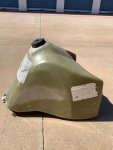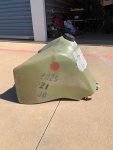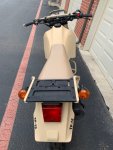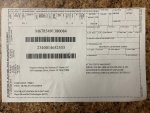Sorry, I was curious how much Kawasaki had changed beyond the lighting and tank for these. It looks like most commercially available parts are a quick match. I didn't know if Kawasaki changed the wiring harness significantly or not, etc.
I think the below paragraph explains it. I always get a good amount of questions about this bike so I think this sums it up pretty good.
I've been getting the same questions about these bikes so I will try to explain it. The original M1030 was a KLR250 in the late 80's. Then Hayes Diversified Technologies (in 2000) won the contract for the USMC motorcycle. They purchased civilian KLR650's (year 1999 / 2000). Then modified them (KLR250 front fairing / headlight bracket, front and back IR / NVG lights, bottom metal skid plate, black out light switch, Progressive 420 shock, removed kickstand safety switch, CARC paint, front goggle bag, IMS 6.6 gallon plastic tank, spill proof gas tank cap, handle bar brush guards, foot brush guards, installed a IMS shifter, IMS pro series foot pegs, made major changes to the wiring harness, installed a blackout / no light / regular light switch, key epoxied into ignition, Dunlop D606 tires, etc). The Marines used these until around 2005. These bikes were designated M1030
B1. Hayes Diversified Technologies then took these same bikes back, freshened the paint, added a diesel motor, upgraded to the new IMS tank, removed the bottom brush guards / skid plate and added a aluminum skid plate, switched the Progressive 420 shock to the F1 Engineering shock, etc. They then became designated the M1030
M1. These are the ones you see at government auction lately selling for around $8,000 to $12,000. They are often titled as year 2000 since they are the original gas version M1030
B1's. The Marines wanted bikes to run on diesel just as the rest of their vehicles. Hayes Diversified Technologies has gone out of service, Fred Hayes has passed away, and diesel parts are not available. Hope this explains it.














